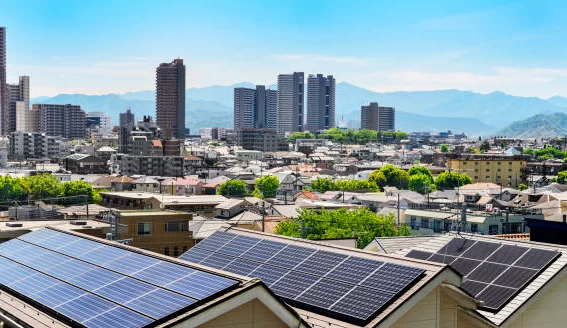Innovative Applications of Microgrids Solar in Smart Cities
In the contemporary era, the concept of smart cities is gaining significant traction as urban areas strive to become more sustainable, efficient, and resilient. One of the key elements contributing to this transformation is the integration of micro grids solar, which holds the potential to revolutionize the energy landscape of cities.

In the contemporary era, the concept of smart cities is gaining significant traction as urban areas strive to become more sustainable, efficient, and resilient. One of the key elements contributing to this transformation is the integration of micro grids solar, which holds the potential to revolutionize the energy landscape of cities.
A microgrid is a localized energy system that can operate independently or in conjunction with the main power grid. When combined with solar energy, it offers a clean and renewable source of power, reducing reliance on traditional fossil fuel-based energy generation. In smart cities, these micro grids solar have found numerous innovative applications that are shaping the future of urban living.
One of the primary applications is in the area of distributed energy generation. Rooftop solar panels on buildings can be aggregated to form a microgrid, generating electricity for the local community. For instance, in a residential complex, each building can have its own solar installation, and the excess energy produced can be shared among the buildings within the microgrid. This not only reduces the demand on the central grid but also enables individual consumers to become prosumers, generating and selling energy back to the grid.
Another important application is in enhancing the reliability and resilience of the power supply. Smart cities are home to critical infrastructure such as hospitals, data centers, and transportation systems that require an uninterrupted power supply. Micro grids solar can act as a reliable backup during power outages or grid disruptions. In case of a natural disaster or other emergencies, these microgrids can quickly disconnect from the main grid and continue to supply power, ensuring the smooth functioning of essential services.
Micro grids solar are also being used to support electric vehicle (EV) charging infrastructure. As the number of EVs on the roads increases, there is a growing need for accessible and sustainable charging options. By integrating solar-powered microgrids with EV charging stations, cities can offer clean and renewable charging facilities. This not only reduces the carbon footprint associated with EV charging but also helps to balance the load on the grid by charging vehicles during times of peak solar generation.
In addition to these, micro grids solar are playing a crucial role in smart grid management. The integration of advanced monitoring and control systems enables real-time optimization of energy generation and consumption within the microgrid. This helps to minimize energy waste and improve overall energy efficiency. For example, smart meters can monitor the energy usage patterns of different consumers and adjust the supply from the solar microgrid accordingly.
Furthermore, microgrids solar can contribute to the development of sustainable communities. In planned smart city developments, entire neighborhoods can be designed with integrated solar microgrids, promoting energy sharing and community engagement. Residents can actively participate in energy management and conservation efforts, fostering a sense of collective responsibility towards a sustainable future.
However, the widespread adoption of microgrids solar in smart cities faces certain challenges. The initial investment required for installing solar panels and the associated infrastructure can be significant. Also, there are technical issues related to energy storage and grid integration that need to be addressed. Moreover, regulatory and policy frameworks need to be updated to support and encourage the development of microgrids solar.
Despite these challenges, the potential benefits of microgrids solar in smart cities are immense. They offer a path towards a more sustainable, resilient, and energy-efficient urban future. As technology continues to advance and costs come down, we can expect to see an increasing number of innovative applications of microgrids solar, transforming our cities into truly smart and eco-friendly habitats.
In conclusion, the innovative applications of microgrids solar in smart cities are not only changing the way we generate and consume energy but also shaping the very fabric of our urban existence. It is a journey that requires collaboration between governments, businesses, and communities to unlock the full potential of this promising technology and create a brighter, greener future for all.
